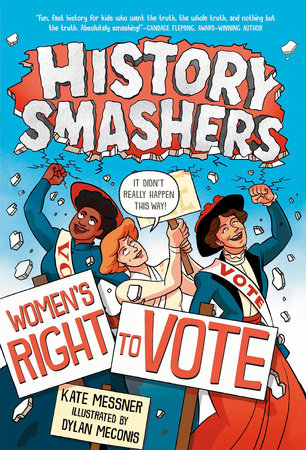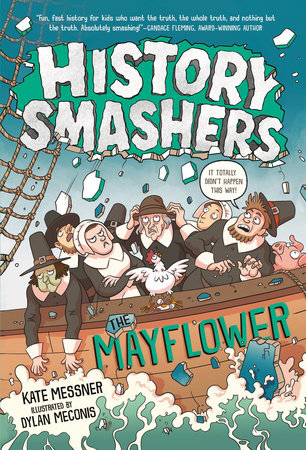
Welcome to STEM Tuesday: Author Interview & Book Giveaway, a repeating feature for the last Tuesday of every month. Go Science-Tech-Engineering-Math!
Today I have the pleasure of interviewing Patricia Newman, award winning author of the newly released Planet Ocean. Combined with Annie Crawley’s stunning photography, Patricia’s research provides an immersive experience for readers of all ages. You’ll also meet some of the people fighting to maintain the ocean’s vital role in sustaining life on our planet.
Before you start, check out this fascinating trailer featuring video shot on location and fascinating facts about the ocean ecosystems: “Why your library needs Planet Ocean”
“Planet Ocean is a beautiful book. It explains the subject material in a beautiful way and the photographs are incredible. A must read with your children.”
–Jeff Bridges, Academy Award winning actor and environmentalist
* * *
 Christine Taylor-Butler: Patricia, in a past life you have been a teacher, a computer programmer, and an Assistant Director for Cornell University’s regional office. In those capacities, you’ve traveled all over the world, including Kenya with a geneticist as a volunteer for the San Diego Zoo. Do you ever slow down?
Christine Taylor-Butler: Patricia, in a past life you have been a teacher, a computer programmer, and an Assistant Director for Cornell University’s regional office. In those capacities, you’ve traveled all over the world, including Kenya with a geneticist as a volunteer for the San Diego Zoo. Do you ever slow down?
Patricia Newman: My husband asks the same question, Christine. I confess I have a hard time sitting still and I enjoy working on multiple projects simultaneously. That said, I relish quiet time, too, to read, soak up nature, and allow my brain to make the connections that ultimately inspire book ideas.
CTB: You received the Sibert Honor award for your book Sea Otter Heroes. You mention that a teacher once described fiction as “heart” and nonfiction as “facts.” You said it hurt your feelings. Could you elaborate?
 Patricia: The conference speaker was asked to define fiction and nonfiction. She said, “Fiction is the heart and nonfiction is the facts.” And you’re right, Christine. That bland, watered down definition hurt my feelings because she implied nonfiction authors don’t add heart to their work. What about children’s biographies profiling people that empower children to reach for the stars? What about the scientists in books such as Sea Otter Heroes who inspire the next generation of scientists? What about books on focused topics, such as sharks, bugs, or space, that feed the curiosity of young readers? Nonfiction authors write from personal experience and passion. Our topics come from who we are as people and light fires within us. And we want to share that passion with young readers – both as they read our work and as they write. I’d advise teachers out there to pick up a copy of Nonfiction Writers Dig Deep edited by Melissa Stewart. Share with students the essays from 50 nonfiction authors and try to mimic our pre-writing process to add heart to student work.
Patricia: The conference speaker was asked to define fiction and nonfiction. She said, “Fiction is the heart and nonfiction is the facts.” And you’re right, Christine. That bland, watered down definition hurt my feelings because she implied nonfiction authors don’t add heart to their work. What about children’s biographies profiling people that empower children to reach for the stars? What about the scientists in books such as Sea Otter Heroes who inspire the next generation of scientists? What about books on focused topics, such as sharks, bugs, or space, that feed the curiosity of young readers? Nonfiction authors write from personal experience and passion. Our topics come from who we are as people and light fires within us. And we want to share that passion with young readers – both as they read our work and as they write. I’d advise teachers out there to pick up a copy of Nonfiction Writers Dig Deep edited by Melissa Stewart. Share with students the essays from 50 nonfiction authors and try to mimic our pre-writing process to add heart to student work.
CTB: Your body of work is such a joyful exploration of both science and the human spirit that seeks to explore and improve the environment. Where did that passion come from?
Patricia: When I was young, I watched bugs. I grew vegetables. I scoured tidepools. I compared the shapes of leaves. Like all children, I was a natural scientist, and my questions led my “investigations.” I guess I’m one of the lucky ones because I never lost that desire to question. I still spend as much time outdoors as I can. Because of my love of science, I understand our connection to our natural world – how it feeds our souls, how it supports life on our planet. Whenever I hear about an amazing scientist working to help others understand this connection, I look for the story.
I often hear librarians say that history is people. What I’d like to hear more of is history AND science is people. The scientific skills of observation, investigation, and analysis form the bedrock of the discovery process in any discipline, whether history, language, culture, or mathematics.
CTB: Let’s talk about Planet Ocean. It’s an amazing work. You collaborated with Annie Crawley, a professional diver and photographer who explores oceans all over the world with a dive team. How did you first meet?
 Patricia: Planet Ocean is my third book with the amazing Annie Crawley. We first met while I was working on Plastic, Ahoy! Investigating the Great Pacific Garbage Patch. After the Scripps Environmental Accumulation of Plastic Expedition (SEAPLEX) returned to dry land, I contacted the scientists I wanted to interview for the book. I also contacted Annie because she was the expedition photographer, and I knew no one would have the kind of images she had. At the time, not too many people were willing to talk trash, and Annie was thrilled to showcase the expedition’s disturbing findings in a book for kids. Plastic, Ahoy! was one of the first children’s books about marine debris and it has inspired more children than I can count. One middle school reader later wrote her college essay about how Plastic, Ahoy! inspired her to study ocean plastic.
Patricia: Planet Ocean is my third book with the amazing Annie Crawley. We first met while I was working on Plastic, Ahoy! Investigating the Great Pacific Garbage Patch. After the Scripps Environmental Accumulation of Plastic Expedition (SEAPLEX) returned to dry land, I contacted the scientists I wanted to interview for the book. I also contacted Annie because she was the expedition photographer, and I knew no one would have the kind of images she had. At the time, not too many people were willing to talk trash, and Annie was thrilled to showcase the expedition’s disturbing findings in a book for kids. Plastic, Ahoy! was one of the first children’s books about marine debris and it has inspired more children than I can count. One middle school reader later wrote her college essay about how Plastic, Ahoy! inspired her to study ocean plastic.
CTB: When Annie traveled to take location shots, she uploaded audio and video so you could stay connected with the source material. Was it hard to live the adventures vicariously?


Dive/Photographer Annie Crawley
Patricia: I was fortunate to travel to Seattle where Annie and I began our research for the Salish Sea chapter of Planet Ocean. We interviewed several scientists and experts by phone and in person. I also spoke to Annie’s Dive Team about communicating science through writing.
Annie already had science expeditions planned for Indonesia and the Arctic, so I knew early on that I would have to live vicariously. (One interesting note: Publishers rarely fund nonfiction research expenses.) Annie recorded and, in many cases, videoed the interviews, she traveled with my questions in hand and frequently added her own, and often included messages to me from our experts. When Annie and composer Stella Sung met for a performance of Oceana, they called me from the car to celebrate!
Note: Find out more about Annie Crawley at: www.anniecrawley.com and www.ouroceanandyou.com
CTB: The book is a wonderful marriage of science and profiles in courage. I was taken with the enormous diversity of people featured who are active in their local communities combating activities that threaten the health of our oceans. Who stands out the most to you? Is there one particular story that stayed with you after the book was finished?
Patricia: I feel like you’re asking me to pick my favorite child, Christine! I love all the stories – Aji Piper who’s not fighting for climate change, but human change; Eben Hopson who makes films to give his Iñupiat people a voice; Helen Pananggung and her indomitable group of children who clean their Indonesian beach every week; Nicole Helgason who replants coral; Dana Wlson who mourns the lack of salmon in his native waters; the kids and teens from Annie’s Dive Team who lobby the state legislature and made two inspiring films for Planet Ocean.

photo credit: anniecrawley.com ouroceanandyou.com.
These people and their stories are connected by their love of and their dependence on the ocean And they are working as hard as they can to make sure we all understand that connection.
The stories also demonstrate how readers can take action in their own lives and become a voice for the sea. Annie and I ultimately want readers to love the ocean because we protect what we love.
CTB: Planet Ocean features QR codes that link to videos of Annie and the dive team on location. It really brings the book alive and puts the reader in the middle of the action. I found myself stopping to explore beyond the text. How did that idea come about?
Patricia: I’m so happy you watched them! When I wrote Eavesdropping on Elephants, my editor loved the idea of including QR codes to hear the elephants talking just as the scientists did in the forest. The QR codes are a popular feature of that book.
 When Annie and I partnered again for Planet Ocean, her filmmaking skills seemed like a natural fit for QR codes. We wrote and designed Planet Ocean with an underwater perspective. The QR codes give readers the opportunity to dive below the surface to witness what happens for themselves.
When Annie and I partnered again for Planet Ocean, her filmmaking skills seemed like a natural fit for QR codes. We wrote and designed Planet Ocean with an underwater perspective. The QR codes give readers the opportunity to dive below the surface to witness what happens for themselves.
CTB: To help you get up close and personal with the material, Annie and her team taught you how to scuba dive. What was that like?
Patricia: Annie began with a classroom lesson that included how to breathe through a regulator, how to read my portable computer to keep track of my air supply, how to clear my mask, and the science of diving.
 Then I dressed in my wet suit, flippers, mask, snorkel, buoyancy vest, and air tank. The air tank is astonishingly heavy on land! We dove in an indoor pool – the water in the Salish Sea hovers around 45 degrees and requires a dry suit and more diving skills than I currently possess. I learned how to breathe slowly, remain neutrally buoyant, and maneuver in the water with all the equipment. We also practiced safety techniques, such as communicating with our buddy. Of course, the Dive Team swam circles around me.
Then I dressed in my wet suit, flippers, mask, snorkel, buoyancy vest, and air tank. The air tank is astonishingly heavy on land! We dove in an indoor pool – the water in the Salish Sea hovers around 45 degrees and requires a dry suit and more diving skills than I currently possess. I learned how to breathe slowly, remain neutrally buoyant, and maneuver in the water with all the equipment. We also practiced safety techniques, such as communicating with our buddy. Of course, the Dive Team swam circles around me.
The real challenge was the underwater photo – holding my end of Annie’s camera housing steady while maintaining neutral buoyancy – not sinking too deep or floating to the surface.
CTB: You’ve written a wide range of nonfiction topics. Many people don’t know that books often start with an idea and a pitch to an editor. It’s a lot of research to conduct for a project that may not find a home. How do you find the right balance?
Patricia: Longer form nonfiction usually begins with a proposal or sales document that provides an overview of the concept, a chapter outline, and a list of the experts I plan to interview. And you’re right, Christine, balance is key.
Before beginning the proposal, I contact the scientists I’d like to feature to get their buy-in. I explain the time commitment involved after the book sells. If they are interested in working with me, I read to acquaint myself with the topic and develop a list of questions. I then set up a 20- to 30-minute interview with the scientist(s) to get at the highlights and dig deep enough to discover a possible narrative thread but not take advantage of the scientists’ time. I must be extremely efficient. If you’re interested in proposal writing, explore this article I wrote for Melissa Stewart’s Celebrate Science blog.

CTB: You’ve done a number of articles and interviews about your passion for writing. But the one that stuck out was your call to action in Publisher’s Weekly about conventions where publishers and vendors give away thousands of plastic items and tote bags in the quest to sell books. You make some sensible suggestions for sustainable options. Could you give a few here?
Patricia: All my environmental titles include a call to action because we must be grateful for nature and begin giving back. Page 53 of Planet Ocean includes several concrete suggestions. In addition, please consider the following:
- Eat sustainably. Buy organic when possible and purchase seafood caught using sustainable fishing methods (Seafood Watch publishes handy guides to help you). Consider eating one plant-based meal per week.
- Use your purchasing power to change corporate practices. Refuse goods packaged with too much plastic or produced by companies that pollute the planet. Some of my favorite alternatives, include:
- Bamboo utensils for to-go meals instead of single-use plastic. Use a refillable coffee mug for your designer coffee and skip the plastic cup/lid/stirrer.
- Bites Toothpaste Bits to refuse the plastic toothpaste tube, plastic dental floss box, and plastic toothbrush. Ask you dentist to stop giving out plastic toothbrushes.
- Etee reusable beeswax food wraps instead of plastic wrap.
- Who Gives a Crap sustainable toilet paper, paper towels, and tissues. They also donate 50% of their profits “to build toilets because we believe access to a safe, dignified loo is a basic human right.”
- Ten Tree for clothing made with sustainable materials. And for every item you purchase, Ten Tree plants ten trees.
- Email corporations who continue to flaunt environmental guidelines. I have emails ready for Amazon and Target for unsustainable shipping practices that include loads of single-use plastic.
- Research electric or hybrid vehicles as a family. What are the pluses and minuses of switching?
- Take your political leaders to task at the local, state, and federal levels. Our health, clean air, clean water, and adequate food supplies start with a healthy ocean and sustainable habits.
CTB: You describe writing these books as “meeting the emotional need in me.” So now I’m intrigued. Is there a project you are dying to write about?
Patricia: One idea in particular tickles me, but because of the coronavirus pandemic, the time is not yet right. Hopefully in the not-too-distant future…
CTB: You’ve been amazing asset to children’s publishing. Do you have any books on the horizon we should keep an eye out for?
Patricia: I have a nonfiction picture book releasing in the fall of 2022 illustrated by Natasha Donovan. All I can say right now is that it’s a conservation story with a happy ending.
Win a FREE copy of “Planet Ocean.”
Enter the giveaway by leaving a comment below. The randomly-chosen winner will be contacted via email and asked to provide a mailing address (within the U.S. only) to receive the book.
Good luck!
 Patricia Newman studied child development at Cornell University. While there, she also studied French, Italian and Childen’s Literature. Patricia’s books encourage readers to use their imaginations to solve real‑world problems and act on behalf of their communities. A Robert F. Sibert Honor recipient for Sea Otter Heroes, Her books have received starred reviews, Green Earth Book Awards, a Parents’ Choice Award, and Bank Street College’s Best Books honors. Patricia speaks at schools and conferences to share how children of any age can affect change.
Patricia Newman studied child development at Cornell University. While there, she also studied French, Italian and Childen’s Literature. Patricia’s books encourage readers to use their imaginations to solve real‑world problems and act on behalf of their communities. A Robert F. Sibert Honor recipient for Sea Otter Heroes, Her books have received starred reviews, Green Earth Book Awards, a Parents’ Choice Award, and Bank Street College’s Best Books honors. Patricia speaks at schools and conferences to share how children of any age can affect change.
 Your host is Christine Taylor-Butler, MIT engineering nerd and author of Bathroom Science, Sacred Mountain: Everest, Genetics, and more than 70 other nonfiction books for kids. She is also the author of the middle grade sci-fi series The Lost Tribes. Follow @ChristineTB on Twitter and/or @ChristineTaylorButler on Instagram
Your host is Christine Taylor-Butler, MIT engineering nerd and author of Bathroom Science, Sacred Mountain: Everest, Genetics, and more than 70 other nonfiction books for kids. She is also the author of the middle grade sci-fi series The Lost Tribes. Follow @ChristineTB on Twitter and/or @ChristineTaylorButler on Instagram










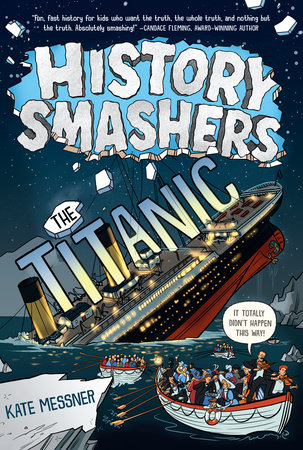
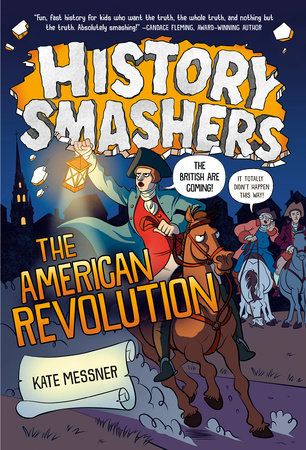
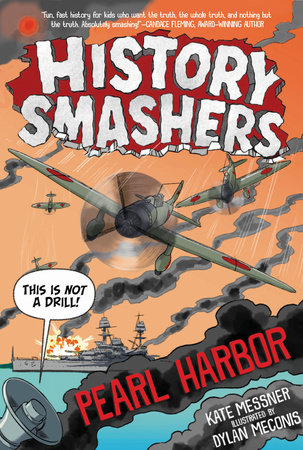 .
. 